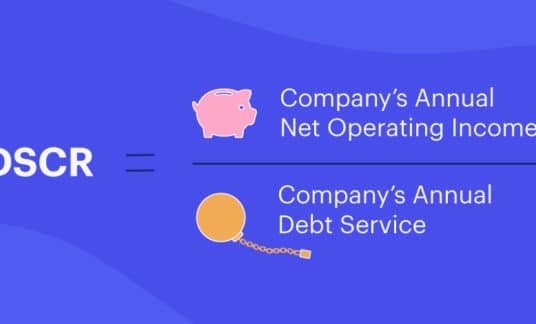Happy employees are productive employees. In fact, a sunny outlook in the workplace can have a significant impact. According to a team at the University of Oxford Business School, happy employees not only worked faster, but they also achieved 13% higher sales than their unhappy counterparts.
Here are 11 ways you can keep employees happy through benefits like career development, positive team building and achievement recognition.
What Are the Benefits of Keeping Employees Happy?
Happiness is contagious, as the saying goes.
Research by HR management firm BrightHR shows employees, particularly millennials, who are happy at work are more productive and take 11 fewer sick days. Happy employees are also more likely to be loyal to your business, as well as have better relationships with their coworkers and clients.
What’s more, keeping employees happy leads to an environment where people aren’t afraid to get creative and experiment.
What Makes Employees Happy?
How can you encourage happiness and build a more productive workforce? Start with these 11 tips.
1. Share the Big Picture
Involve your employees by showing them how their work impacts the company’s overall direction. This helps your employees feel valued for their work, as well as guiding them towards clear, shared goals.
2. Appreciate Individuals
Your employees are much more than just your employees. Get to know who they are beyond their job titles. Knowing their interests in and out of work can help foster community, as well as teach you how to motivate them better to grow your business.
3. Promote Work-life Balance
Encourage employees to have fulfilling lives outside of work. Be respectful of their time and avoid emailing or calling during off-hours. Allow employees to disconnect when they’re out of the office so they can be happy and focused at work.
4. Encourage Wellness
Part of keeping employees happy is supporting healthy habits, whether it’s sleep or exercise. Foster a workplace where employees are encouraged, rather than disciplined, for taking care of their minds and bodies.
On a related note, make the workplace one where employees feel relaxed and motivated rather than on edge. Keep it clean and organized. Together, these efforts can pay off with happier, healthier employees who are more productive.
5. Boost Conversation and Collaboration
Create spaces, physical or digital, where employees can comfortably socialize or collaborate. Inviting environments can unexpectedly lead to innovations, such as new projects or processes.
6. Support Teamwork Outside of Work
Organize activities that promote team building—outside of the office. These events don’t have to be elaborate as long as they create a sense of community. Something as casual as a bowling night can help employees bond and blow off steam together.
7. Keep the Mood Positive
Realistically, work can’t always be fun—but a tense environment won’t lead to happy employees either. As the business owner or manager, lead by example by having a positive attitude and remembering to greet and thank your employees.
8. Offer Helpful Advice and Feedback
Giving feedback—whether it’s positive or negative—is part of your job as a business owner or manager. Suggestions about how to improve will make performance reviews more constructive and productive.
Don’t always remind employees of their minor missteps. Those types of conversations can build pressure and stress.
Transparency also contributes to workplace happiness, so make employees aware that you’re also receptive to feedback on your performance. This proves you’re invested in everyone’s growth.
9. Give More Responsibility, Responsibly
Show your employees you trust them by assigning them more valuable responsibilities. Alternatively, offer your team opportunities to take the initiative and spearhead projects—this way, you can evaluate who has leadership potential and who may thrive as a collaborator.
Avoid micromanaging to keep employees happy and engaged with their growing workloads. Workers who are afraid to make mistakes won’t be happy to come to the office.
10. Provide Training and Support
Offering developmental support—such as job training or mentorship programs—proves to employees that you care about their careers, not just your bottom line. Workers that find long-term satisfaction in their careers are likely to be happy employees.
Also, make sure your employees have access to the tools and resources, such as software, to do their jobs well. Limiting your employees’ capabilities only leads to stress.
11. Acknowledge Success
Recognize your employees’ progress, whether they hit professional milestones or overcome other challenges. Make these acknowledgments public to foster an environment that is supportive of everyone’s accomplishments.

How Should You Reward Employees?
Celebrating success is an integral part of making employees happy in the workplace. This can be as straightforward as saying “thank you” to formalizing perks for your employees.
Some employee rewards to consider include:
- Non-cash awards, such as handwritten notes
- Company-wide email shout outs
- Designated parking spots
- Increased workplace flexibility, such as telecommuting or more vacation time
- Catered lunches and other fringe benefits
-
What Are Fringe Benefits?
Fringe benefits are the “perks” offered by employers that are provided beyond standard salary. Examples include tuition reimbursement, health and dental insurance, gym memberships, paid time off, free meals and retirement plan contributions. Fringe benefits can improve employee satisfaction and engagement, which in turn can help boost productivity.
Also, be aware that smaller, more frequent rewards can have a greater boost on happiness than a larger, infrequent reward. Vary rewards or perks to keep them from becoming routine, but remember that most often, it’s the thought that counts.
Having a happy and positive workplace is a team effort, but keeping employees happy will pay dividends for your small business.











